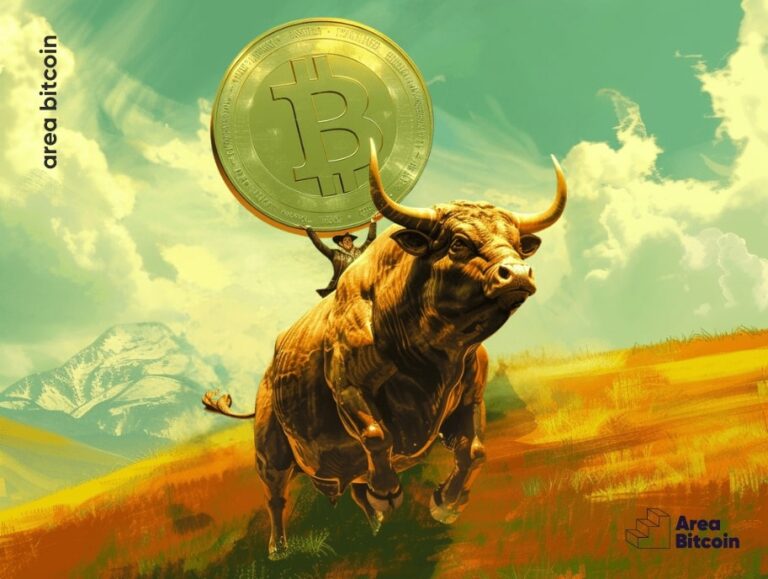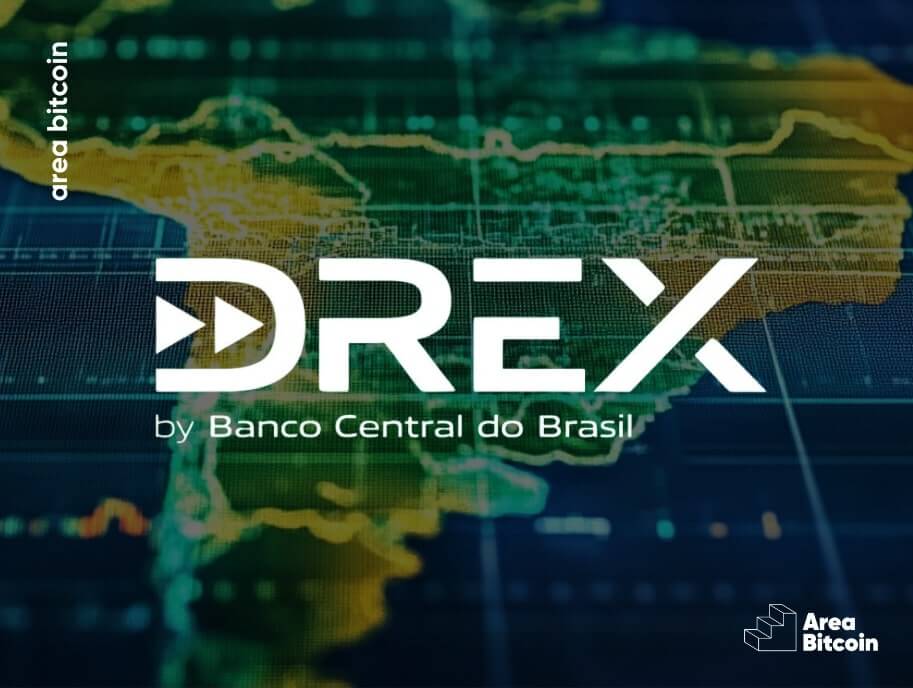If you follow Bitcoin or are part of the crypto enthusiast community, you’ve likely heard the term “bull market.” This term is commonly used to describe market uptrends.
Just like financial markets, Bitcoin experiences cycles, one of which is the bull market—a period when the currency’s value is rising.
Even though Bitcoin is a volatile asset with significant price swings, it’s possible to recognize when the market is in this upward phase.
During these times, enthusiasts tend to become more “bullish” (optimistic) about the market, predicting historic price increases.
Several factors contribute to a Bitcoin Bull Market, and in this article, we’ll explore everything about it.
Let’s get started!
Table of contents:
What is a Bull Market?
The bull market literally means “market of bulls.” The term highlights a period in which asset prices are on the rise.

In the case of Bitcoin, a bull market occurs when the price consistently increases over an extended period.
Experts typically agree that a bull market is defined by price gains of more than 20% compared to the previous cycle.
During this time, Bitcoin often reaches its famous ATH (All-Time High), or historical price peak. Confidence in the asset also grows, with demand outpacing supply.
As a result, with more people buying Bitcoin and less supply available, prices naturally rise, following the basic principle of supply and demand.
How did the term Bull Market originate?
The term “bull market” originated in the stock market to describe a phase of rising prices. The bull became a symbol of these upward movements, gaining recognition among investors.
In the financial market, the bull is notable because, when it attacks with its horns, it thrusts its target upward.
This symbolism is why there’s a golden bull statue in front of the New York Stock Exchange in the financial hub of Wall Street (you’ve probably seen a photo of it online).
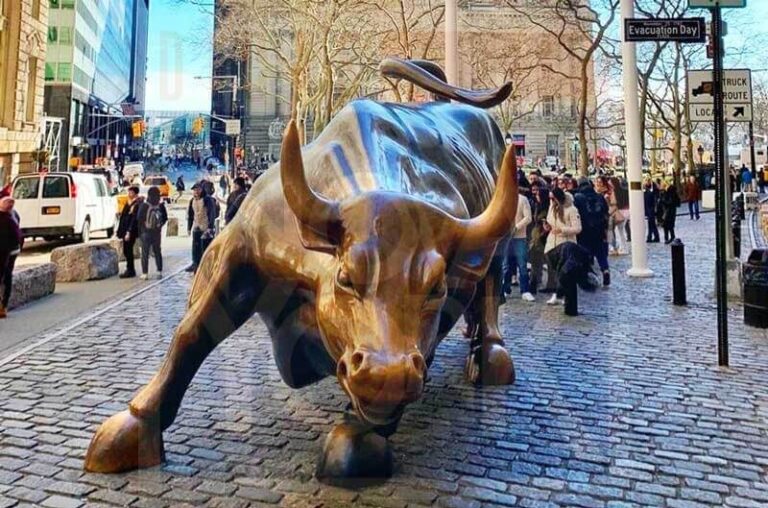
With the rise of Bitcoin, the term began to be used to represent periods of upward trends in the digital currency world as well.
Characteristics of a Bull Market
As mentioned earlier, the main characteristic of a Bull Market is consistent price increases.
Additionally, other aspects are typically observed during this upward phase, such as:
- Negative news doesn’t affect the price uptrend;
- Market investors demonstrate optimism and FOMO (fear of missing out);
- People start increasing their positions in the currency.
It’s also common for the currency to reach its highest price of all time (ATH) during these periods, along with the influx of new investors increasingly positioning themselves in the asset.
And if your neighbor or friend starts asking how to buy “that Bitcoin thing,” that can also be an unofficial sign of a bull market, haha.
How does a Bull Market happen?
A bull market is typically triggered by several factors, often sparked by positive market expectations. This optimism drives more people to invest in the asset, boosting demand.
For example, in early 2024, large institutions like BlackRock and MicroStrategy increased their investments following the approval of ETFs in the United States.
Additionally, there was growing anticipation for the upcoming Bitcoin halving, scheduled for April 2024.
These factors heightened expectations around Bitcoin, leading more people to buy Bitcoin/Sats while the available supply decreased.
The stimulus for price increases is closely tied to investor sentiment in that market.
During cyclical events like the Bitcoin halving, which occurs approximately every four years, it’s common for the currency to enter a bull market. The halving reduces the issuance of new bitcoins by half, making the currency scarcer.
During this time, enthusiasts and investors often generate buzz on social media, attracting new investors and encouraging more people to buy Bitcoin.
Naturally, as demand rises, prices naturally follow.
Previous Bitcoin Bull markets
Historically, Bitcoin has experienced around five bull market periods, and as of 2024, it seems to be entering another one.
2011 – The First Bull Market Period
Despite having a very small market value — after all, Bitcoin was only a few years old — it experienced its first bull market in 2011.
This bull phase lasted from February to July 2011 and occurred shortly after Bitcoin’s first recorded valuation. This historic moment happened on May 21, 2010, when two pizzas were famously purchased for 10,000 BTC. This transaction, carried out by Laszlo, valued Bitcoin at $0.0025.
In 2011, Bitcoin reached one dollar for the first time, drawing media attention.
By June of the same year, Bitcoin saw its largest gain of over 3,000%, reaching a value of $31.9.
This bull market period came to an end with the notorious theft of 750,000 BTC from the Mt. Gox exchange.

2013 – Second BTC Bull Market
The second Bitcoin bull market occurred in 2013.
This upward phase began after the Cypriot government raised taxes due to the banking crisis, prompting people to turn to Bitcoin as an alternative store of value.
At the same time, several European countries started recognizing Bitcoin’s legitimacy.
With these developments, Bitcoin saw a total appreciation of more than 2,186%, surpassing the price of gold and reaching $1,163 per unit on November 30, 2013.
However, the uptrend ended when China’s central bank banned Bitcoin in December 2013.
From 2014 to 2015, Bitcoin faced turbulent times, including another theft at Mt. Gox, which led to its bankruptcy.
Additionally, U.S. authorities seized the Bitcoins of the Silk Road founder, a site operating on the deep web, and shortly after, Russia also banned Bitcoin usage in the country.
Between 2014 and 2015, Bitcoin’s value dropped by 77.91%, falling from $960 to $212.
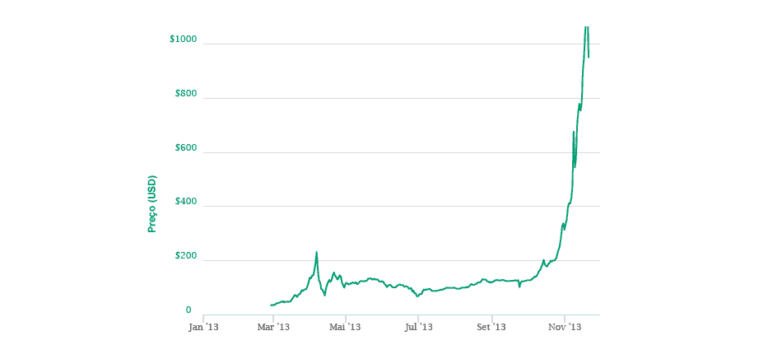
2016 – New Bull Market After the Crisis
In 2016, a new Bitcoin halving took place, reducing the issuance of new coins by half.
At the same time, a global financial crisis was unfolding, fueled by the UK’s exit from the European Union and uncertainty around Donald Trump’s presidency.
That year, Bitcoin saw a 149.72% increase, rising from $366 to $917.
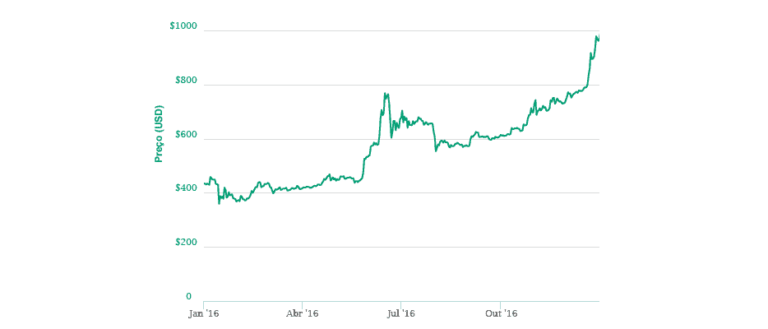
2017 – Fourth Bull Market Period
This bull market lasted nearly all of 2017 and was marked by several significant events:
- In January 2017, Coinbase, now one of the largest exchanges, received its operating license.
- In April 2017, Japan recognized Bitcoin as legal payment.
- In June 2017, in the United States, the first license to operate Bitcoin futures contracts was granted.
- In December, the first Bitcoin futures contract was introduced on the Chicago exchange.
During this period, Bitcoin saw an impressive gain of 1,951.71%, rising from $963 to $19,758.
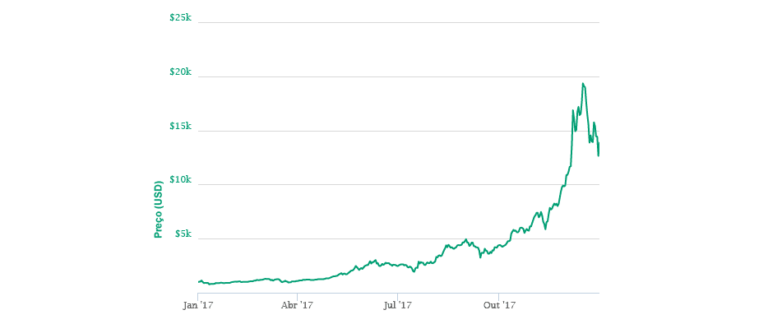
2021 – Fifth Bull Market Period
The uptrend in 2021 began at the end of 2020 and extended into early 2021.
Several key events marked this period, including:
- Bitcoin began being viewed as a financial reserve amidst the trade war between China and the United States.
- In 2020, another Bitcoin halving occurred.
- Bitcoin gained more adoption due to COVID-19 uncertainties.
- Institutions started investing more in BTC during this period.
- The currency saw increased acceptance by businesses and retail investors.
During this bull phase, Bitcoin reached a peak value of $68,990.60.
Are we in a Bull Market?
In 2024, another Bitcoin halving took place. Following Bitcoin’s usual cycle, it’s common for prices to start rising slightly before or during the halving, often reaching new all-time highs a year later.
However, in this cycle, the all-time high occurred even before the halving.
By March, Bitcoin had already surpassed the $72,000 mark.
So far, 2024 has been a strong year for Bitcoin, with price increases beginning in January, fueled by the approval of spot BTC ETFs in the U.S. This development further eased institutional entry and attracted more investor attention to the currency.
While this could indeed mark the start of a new Bitcoin bull market, it’s important to avoid making predictions, especially with Bitcoin, which has a history of surprising us.
What marks the end of a Bull Market?
It’s important to recognize that a bull market, like a bear market, doesn’t last forever. However, it’s essential to understand that, even during this period, there will be price fluctuations, including drops and corrections.
Interpreting a momentary dip as the end of a bull market is a mistake. However, at some point, investor confidence in the currency may diminish, especially if it starts experiencing instability, such as being impacted by negative news.
Movements like this cause short-term investors to quickly liquidate their positions, potentially leading other investors to do the same, triggering a herd effect.
A sharp downward price movement can signal the end of a bull market, as many investors start believing that prices will only continue to fall. This can create a downward spiral as more people sell their coins to avoid further losses.
Conclusion
As you’ve seen in this article, a bull market is a common period that occurs not only in traditional financial markets but also in the Bitcoin market.
It’s important to recognize that these periods are part of cycles that fluctuate over time, which is typical for Bitcoin’s current phase, where stable price valuations haven’t yet been established.
To avoid making impulsive investment decisions, it’s crucial to study the topic thoroughly.
While a bull market can offer significant opportunities for profit, price corrections are inevitable, and it’s important not to panic when they happen.
I hope you enjoyed this article, and don’t forget to share it with a friend—it really helps us out!
Until next time!
Share on your social networks:

Founder of Area Bitcoin, one of the largest Bitcoin education projects in the world, she is a marketer, passionate about technology, and a full-time hands-on professional. She has participated in major Bitcoin conferences such as Adopting Bitcoin, Satsconf, Surfin Bitcoin, and Bitcoin Conference.
Did you like this article? Consider buying us a cup of coffee so that we can keep writing new content! ☕

